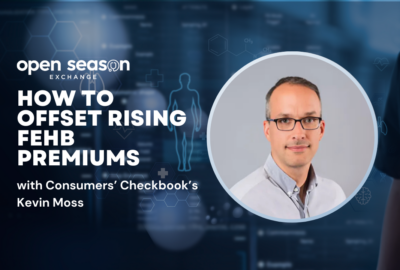TSP Snapshot: A look behind the October numbers
October is the best month yet this year for the Thrift Savings Plan. Guest analyst Paul Yurachek with Ameriprise Financial Services offers this month\'s install...
wfedstaff | June 3, 2015 4:40 pm
By Max Cacas
Reporter
Federal News Radio
After a summer of downturns and some uncertainty, things are starting to look up for federal workers invested in the Thrift Savings Plan.
Analyst Paul Yurachek, with Ameriprise Financial Services in Bethesda, Md., reports up arrows across the board for the funds of the Thrift Savings Plan for October.
“Every one of the funds was up in direct proportion to how they should be regarding risk,” he said. “The G Fund is always up. It was up just short of two-tenths of one percent. The F fund almost four-tenths of one percent. The C fund was up 3.8 percent. The S fund 4.48, and the I fund 3.63 (percent).”
Yurachek said the L fund performed well, and was up generally across the board.
He reminds investors that the L 2010 will appear to be identical to the L income fund and that over time. TSP fund administrators are expected to add a 2050 fund.
Yurachek said factors affecting the TSP include, for the F fund, low interest rates which tend to drive up the value of bonds. Yurachek said he remains “mystified” by the stock-related funds of the TSP because even though the economy appears to be recovering, it isn’t recovering quickly enough to provide an additional boost to the economy.
Still, he said, “a lot of companies are coming out with their earnings reports for the quarter, and they were quite good,” accounting, in a small way, for the positive performance of stock-based TSP funds.
Additionally, Yurachek said money managers in mutual funds or pension funds who have missed the run-up to last month’s gains “are jumping on the train, a little late, and creating a demand for stocks because they want their investors to see that they are fully invested at the end of the year.”
Yurachek also offered some perspective on the F fund, which he said is invested in “high-quality, corporate and government bonds.”
Yurachek said the F fund has been a part of the TSP since January of 1988, several months after the TSP was established.
“Amazingly enough, since its inception, the F fund has earned 7.1 percent a year compounded, meaning, if you put $100 into it on the day it opened, it would be work $450 at the end of October of this year,” he explained.
Yurachek said that over the 22 years it’s been around, the F fund has been a “bull market for bonds,” primarily because interest rates have been very low. He said for example, that interest rates hover around the zero mark, with a three-year Treasury bond currently paying interest of four-tenths of one percent.
“It’s been a wonderful time for bonds,” he said, but warns that a “day of reckoning will come,” when, because of the deficit, the nation will need to raise money and will be forced to offer a higher-rate of return on government bonds, which tends to drive rates up for other financial instruments. On that day, Yurachek said the performance of the F fund can be expected to turn down.
Finally, Yurachek noted that the large number of investors who flock to the TSP are proof positive that as much as possible TSP investors “chase the returns,” and will re-allocate their investments as they see what others are making in other funds, as the performance of the F and G funds historically indicate.
(Copyright 2010 by FederalNewsRadio.com. All Rights Reserved.)
Copyright © 2024 Federal News Network. All rights reserved. This website is not intended for users located within the European Economic Area.





